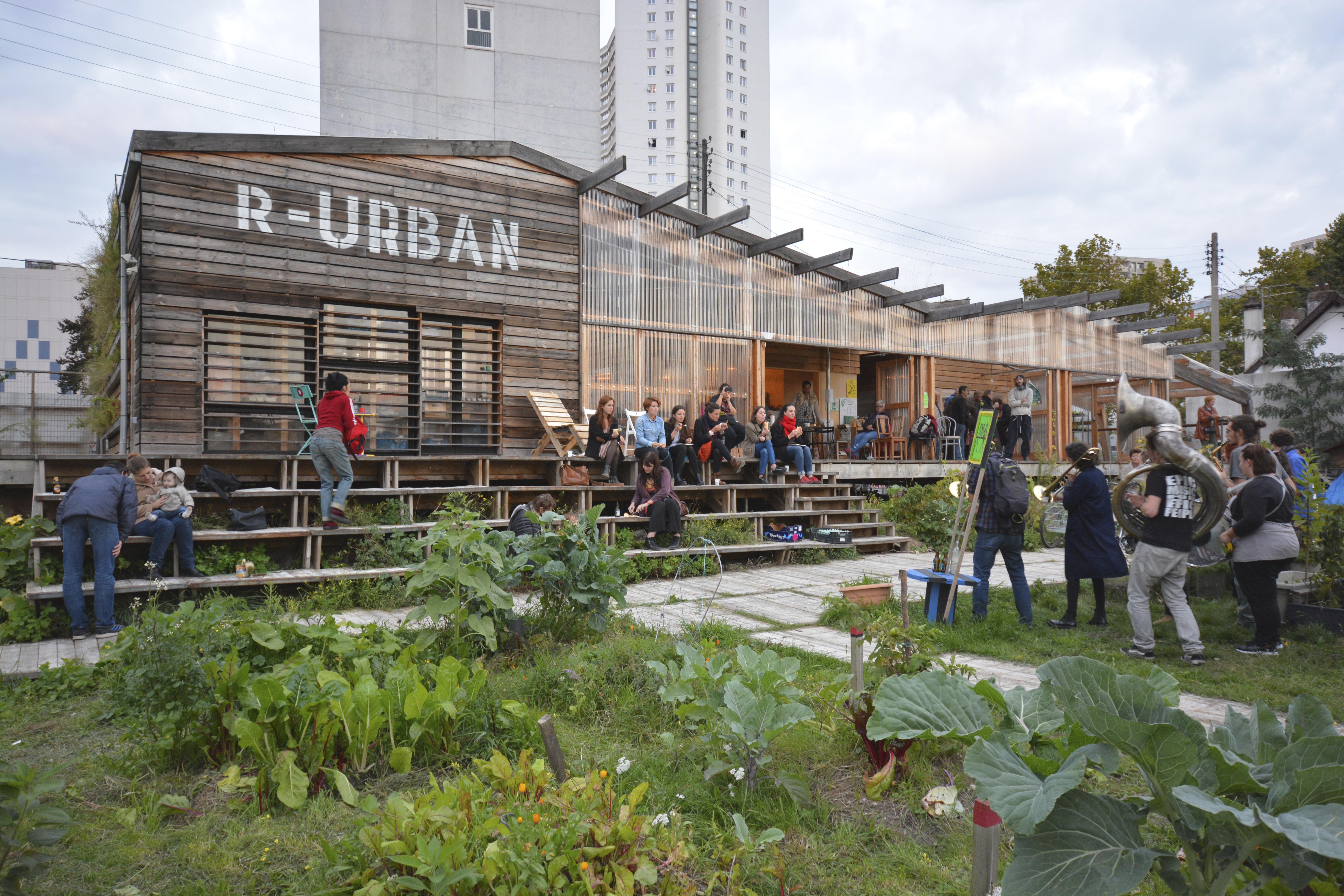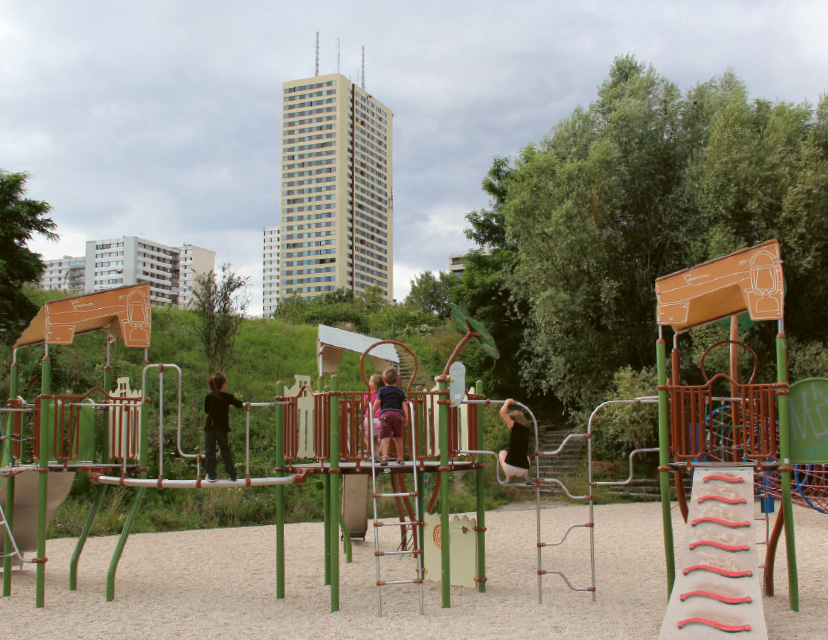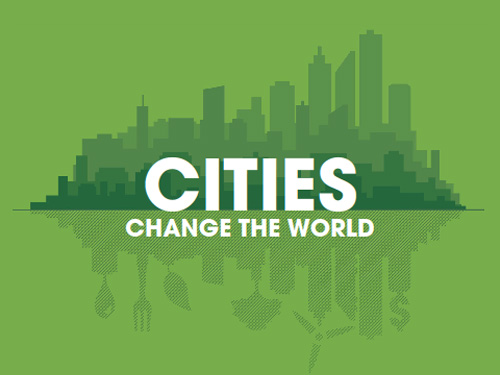Cities are in a position to become major drivers of global economic, ecological and social change, but their ability to transform and adapt is open to question. Before thinking about new models or overall strategies, experimental projects are carried out everywhere. How can we activate the levers of change within the democratic process?

The development model of cities is under threat. They are clearly the places that possess the most resources capable of accelerating economic globalisation and maximising its outcomes, but they may be ill-equipped to deal with ecological transition, even if their density allows them to mutualise infrastructures and limit the consumption of energy and space. According to the phrase popularised by Max Weber, “city air makes man free”. But as they grow, cities find their sustainability called into question: urban expansion stimulates car use and generates congestion, pollution and noise; the flow of materials in the “urban metabolism” takes its toll on the environment and creates emissions; natural spaces become scarcer and biodiversity collapses; heat waves occur more often than elsewhere and the human and ecological effects of natural catastrophes are multiplied; the permanent flow of populations makes it impossible to accommodate everyone in acceptable conditions and increases tensions and inequalities. The vital question that cities have to answer is simple: beyond reducing their impact on the environment, can they roll out innovations for sustainable progress? Will they be able to foster a new form of development? By way of response there are a huge number of experiments and initiatives taking place in the fields of planning, construction and resource management1, which could turn out to be levers of change in the future. Exploring them, contextualising them and making them systematic are the fundamental challenges of the coming decade.
Environmental sustainability in progress?
Doubts regarding the effectiveness of ecological conversion in development policies remain strong, and “greenwashing” is a reality. And yet a global perspective reveals that real changes are taking place everywhere. Approaches are becoming more systemic than ever and creating a less conflict-ridden relationship between cities and nature. Metropolitan green belts, which have a long history in London, Seoul and Portland (Urban Growth Boundary), and which make it possible to set boundaries for urban growth, are now being superseded by spatial models that seek to bring open spaces into the very heart of large cities. The Copenhagen Finger Plan has shown the value of a long-term initiative. Other cities are trialling flexible and hybridised planning models, such as the Parco Agricolo Sud in Milan: a huge agricultural park (47,000 hectares) that does not function as a rigid boundary for urbanisation but as a dynamic regional park with an integrated policy. The Paris Region has an interesting range of instruments at its disposal, with the Regional Master Plan (Île-de-France 2030), the Regional Ecological Plan (green-blue grids) and regional nature parks charters. More broadly, the Region is experimenting in many areas with nature-based solutions, which aim to gradually build up a fully-fledged green infrastructure (see article by Marc Barra and Nicolas Laruelle). It is interesting to note that taking better account of the local context—climate, geography, hydrography, ecosystems, natural settings— encourages people to look for solutions that involve and empower regional actors and to interconnect different scales more effectively. This is a reality, for example, in the Great Lakes region of North America, where the challenges relating to the world’s largest freshwater reservoir, which serves over 50 million inhabitants, has led to rewilding projects run at the level of local districts and municipalities (these projects are described in the article by Philip Enquist et al.). A similar process is underway in Perth, Australia, where the “regenerative city” strategy was first demonstrated in houses, then applied to city blocks, and finally scaling up to entire neighbourhoods and even cities (as explained in Peter Newman’s article). The environmental approach on larger scales, and sometimes in less dense suburban areas, does not prevent the use of technological solutions, which are nonetheless more sophisticated in metropolitan heartlands and are now being modelled using “environmental design” methods, as in Hong Kong (see article by Jianxang Huang et al.). There may be a fear of “piecemeal” ecological conversion, with highly localised projects that have a limited effect in regional terms, but such approaches respond to a need to contextualise transformative solutions and reflect a desire on the part of local communities to make responses to global challenges their own2. This means that transition should also be a social phenomenon, even if this dimension seems to be the Cinderella of metropolitan development strategies.
Green Planning in the Copenhagen Region
Protecting rural areas from continuous urban growth has, for a long time, been a major challenge for dynamic cities: guided by their geography, London and Seoul have opted for a green belt, the Randstad for a “green heart”, and the Ruhr for a linear regional park. These green infrastructures provide essential ecological, agricultural, landscape-related, recreational and urban services, one of whose conditions is the long-term stability of the boundaries between natural and urban space. Copenhagen stands apart in that it has condensed a long-term scheme for the organisation of the regional area into a striking image, the Finger Plan, which does not follow natural lines of force (valleys, contours, etc.) This plan, which has been revised six times since it was first formulated in 1947, has shaped the development of Greater Copenhagen around train stations located along fi ve rail corridors. Between the “fingers”, it maintains and develops a network of open spaces reaching into the very heart of the city, forming “green wedges”. More than green belts, these natural continuities are used for leisure activities and play a significant role in local neighbourhood communities. In 2007, the revision of the Finger Plan was taken away from the mayors and became the responsibility of the State (the Minister of the Economy), which placed more emphasis on growth. For the 2019 Finger Plan, contrasting scenarios of regional development were put up for debate. The preferred strategy is to intensify development in the heart of the city (the palm of the hand), to carry out in filling works in the harbour, and to create limited urban extensions around certain stations.
Paul Lecroart, Senior Urban Planner, L’Institut Paris Region
Should social sustainability be a central concern?
The “New Programme for Cities”, adopted at the UN Conference on housing and sustainable development in Quito, Ecuador, on 20 October 2016, supports “a vision of cities for all”3. The respective national governments also take note of the initiatives of some states and local authorities in favour of a “right to the city”, but without enshrining this as a common principle. Clearly the democratisation of urban policy remains a subject of debate. Innovations in the social sphere are nonetheless legion. Culture and major sport events are used by cities as instruments for urban redevelopment in underprivileged areas and districts (see the articles by Richard Brown, p.130 and Matthieu Prin et al.). In a more systemic vein, cities are seeking to put people at the heart of their models to redesign the car-oriented city and bring proximity and continuity back into public space (read Paul Lecroart’s article). Southern cities have opened up new perspectives in the implementation of development strategies and models of urban management and governance, focusing on the social dimension4. In Latin America, the participatory budget of Porto Alegre and the social urbanism of Medellín are now acknowledged. States such as Brazil and Ecuador, as well as Mexico City, have institutionalised the “right to the city” as a legally binding principle framing urban policies. Here, as in large African cities, the implementation of the concept developed by Henri Lefebvre may be somewhat ambitious: it acknowledges informal housing as a legitimate mode of urbanisation, and thus recognises the sovereignty of the communities in question—in particular working-class populations made up of migrants and people who have moved from countryside areas—in decision-making processes concerning the development of their living environments.
In Europe too, the question of the large influx of new populations raises challenges for development policy, especially where housing is concerned (see Marie Baléo’s article). A few cities have placed social sustainability at the heart of their models. Malmö has created an independent commission devoted to this aspect, made up of researchers and municipal civil servants, whose goals are to improve public health, fairness and social wellbeing, and whose recommendations are taken into account in urban planning strategies. Vienna promotes the concept of gender mainstreaming, which makes it possible to assess the implementation of urban policies with regard to gender equality and the accessibility of public space and urban services to women. Most importantly, Vienna has demonstrated remarkable continuity in the development of a social model based on a policy of affordable housing (see Eugen Antalovsky’s article). The Paris Region also has experiences to share, with its land management tools, the size and dynamics of its social housing pool, its huge investments in urban renovation, and its expertise in the fields of urban social development and dealing with substandard housing neighbourhoods. In response to the threats posed to these interventionist models, there is an increasing awareness of the importance of housing policy in the sustainable development of cities, as shown in 2019 by the Appel de Lyon, an appeal on the part of major European cities “for a society of affordable housing”5. Of similar value are the investigations and experimentations launched in the framework of the 2022 Internationale Bauausstellung (IBA) in Vienna, with a view to building cities which, as befits their role, are able to guarantee a future and a place for everyone.
Léo Fauconnet, Political Scientist and Urbanist, with Maximilian Gawlik, Landscape Architect and Urbanist, L’Institut Paris Region
1. Lorrain, Dominique et al., Villes sobres. Nouveaux modèles de gestion des ressources, Presses de Sciences Po, 2018.
2. For a critical view of multilateral management and local mobilisation, see Descola, Philippe, Humain, trop humain, Revue Esprit no. 420, December 2015.
3. “Goal 11” of the Quito Declaration. This may be consulted at www.habitat3.org
4. Spire, Amandine and Morange, Marianne, Les trois faces du droit à la ville au Sud, Revue Urbanisme no. 412, January 2019.
5. This may consulted on the website of the International Social Housing Festival, www.ishf2019.com


